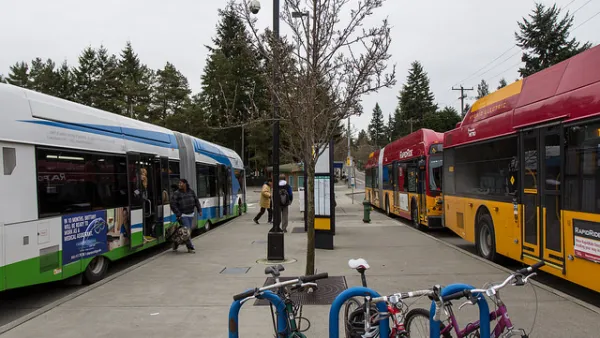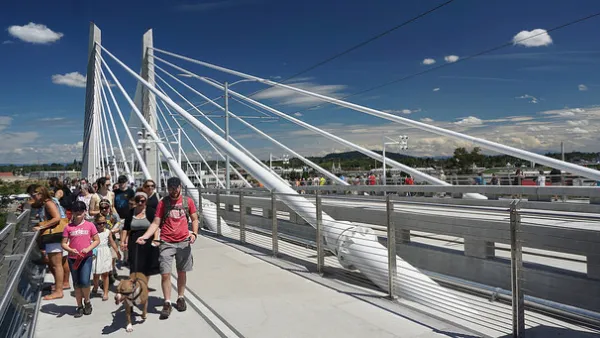As the largest council of governments in the country adopts a $525 billion transportation and land use plan for the next two decades, Josh Stephens marks the beginning of Southern California's age of climate-friendly, smart-growth regionalism.
This week, the 83 members of the Southern California Association of Governments' general assembly unanimously adopted the organization's 2012-2035 Regional Transportation Plan (RTP) and Sustainable Communities Strategy (SCS), "a roadmap to welcome four million new residents and 1.7 million new jobs into our region by 2035," noted Pam O'Connor, SCAG President.
The RTP/SCS is just the second in the state to be adopted under 2008's landmark climate change and smart growth law, Senate Bill 375, which sets targets for greenhouse gas reduction that each the state's Metropolitan Planning Organizations (MPOs) are mandated to meet through integrated long-range land use and transportation planning via sustainable community strategies.
As such, the ambitious and progressive plan "dedicates 54 percent of funding to transit and non-highway options, more than triples the funding for bike and pedestrian projects, and reduces traffic congestion overall and per-capita delay by 24%--despite the addition of 4 million residents in the 6-county region by 2035. It would locate 87 percent of all jobs and 82 percent of all housing within a half mile of rail stations and bus stops. Apartments and condominiums would account for 68 percent of all development, up from 39 percent in the previous plan," reports Stephens.
FULL STORY: Southern California Adopts $525 Billion Regional Plan

National Parks Layoffs Will Cause Communities to Lose Billions
Thousands of essential park workers were laid off this week, just before the busy spring break season.

Retro-silient?: America’s First “Eco-burb,” The Woodlands Turns 50
A master-planned community north of Houston offers lessons on green infrastructure and resilient design, but falls short of its founder’s lofty affordability and walkability goals.

Delivering for America Plan Will Downgrade Mail Service in at Least 49.5 Percent of Zip Codes
Republican and Democrat lawmakers criticize the plan for its disproportionate negative impact on rural communities.

Test News Post 1
This is a summary

Test News Headline 46
Test for the image on the front page.

Balancing Bombs and Butterflies: How the National Guard Protects a Rare Species
The National Guard at Fort Indiantown Gap uses GIS technology and land management strategies to balance military training with conservation efforts, ensuring the survival of the rare eastern regal fritillary butterfly.
Urban Design for Planners 1: Software Tools
This six-course series explores essential urban design concepts using open source software and equips planners with the tools they need to participate fully in the urban design process.
Planning for Universal Design
Learn the tools for implementing Universal Design in planning regulations.
EMC Planning Group, Inc.
Planetizen
Planetizen
Mpact (formerly Rail~Volution)
Great Falls Development Authority, Inc.
HUDs Office of Policy Development and Research
NYU Wagner Graduate School of Public Service





























